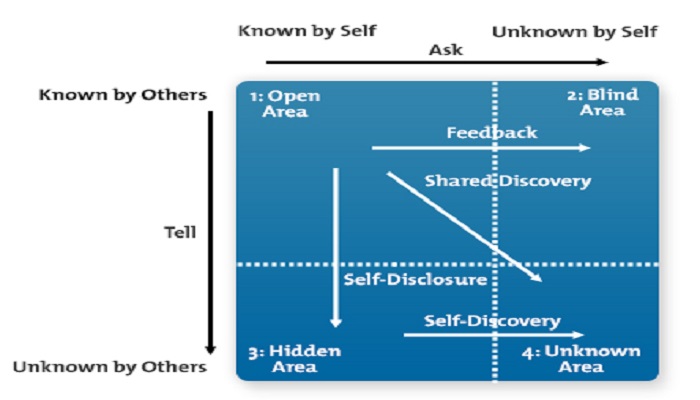

Using Self-Discovery and Communication to Build Trust
The Johari Window improves communication and trust.
Have you ever been part of a team where everyone was completely open with one another?
If so, then the chances are that you worked extremely effectively together. You knew your co-workers very well, and there was a solid foundation of trust between you. As a result of this positive working environment, you probably accomplished a great deal with this group.
Most of us realize that teams rely on trust in order to function productively, but how do you go about building that trust?
The Johari Window is a model that helps you do this, and it helps you learn important things about yourself, and so develop as a human being.
In this article we'll look at how the Johari Window works, and we'll see how you can use it with your team to improve communication and trust.
The Johari Window is a communication model that is used to improve understanding between individuals. The word "Johari" is taken from the names of Joseph Luft and Harry Ingham, who developed the model in 1955.
There are two key ideas behind the tool:
1. That you can build trust with others by disclosing information about yourself.
2. That, with the help of feedback from others, you can learn about yourself and come to terms with personal issues.
By explaining the idea of the Johari Window, you can help team members to understand the value of self-disclosure, and you can encourage them to give, and accept, constructive feedback.
Done sensitively, this can help people build better, more trusting relationships with one another, solve issues, and work more effectively as a team.
The Johari Window is shown as a four-quadrant grid, which you can see in the diagram below.
The four quadrants in the top of page are:
1. Open Area (Quadrant 1)
This quadrant represents the things that you know about yourself, and the things that others know about you. This includes your behavior, knowledge, skills, attitudes, and "public" history.
2. Blind Area (Quadrant 2)
This quadrant represents things about you that you aren't aware of, but that are known by others.
This can include simple information that you do not know, or it can involve deep issues (for example, feelings of inadequacy, incompetence, unworthiness, or rejection), which are often difficult for individuals to face directly, and yet can be seen by others.
3. Hidden Area (Quadrant 3)
This quadrant represents things that you know about yourself, but that others don't know.
4. Unknown Area (Quadrant 4)
This last quadrant represents things that are unknown by you, and are unknown by others.
The ultimate goal of the Johari Window is to enlarge the Open Area, without disclosing information that is too personal. The Open Area is the most important quadrant, as, generally, the more your people know about each other, the more productive, cooperative, and effective they'll be when working together.
The process of enlarging the Open Area quadrant is called "self-disclosure," and it's a give-and-take process that takes place between yourself and the people that you're interacting with.
As you share information, your Open Area expands vertically and your Hidden Area gets smaller. As people on your team provide feedback to you about what they know or see about you, your Open Area expands horizontally, and your Blind Area gets smaller.
Done well, the process of give and take, sharing, and open communication builds trust within the group.
At first glance, the Johari Window may look like a complex tool, but it's actually very easy to understand with just a little effort. As such, it provides a visual reference that people can use to look at their own character, and it illustrates the importance of sharing, being open, and accepting feedback from others.
People who have a large Open Area are usually very easy to talk to, they communicate honestly and openly with others, and they get along well with a group. People who have a very small Open Area are difficult to talk to, they seem closed off and uncommunicative, and they often don't work well with others, because they're not trusted.
Other people might have a large Blind Area, with many issues that they haven't identified or dealt with yet. However, others can see these issues clearly. These people might have low self-esteem, or they may even have anger issues when working with others.